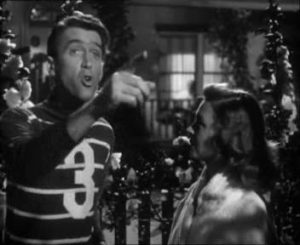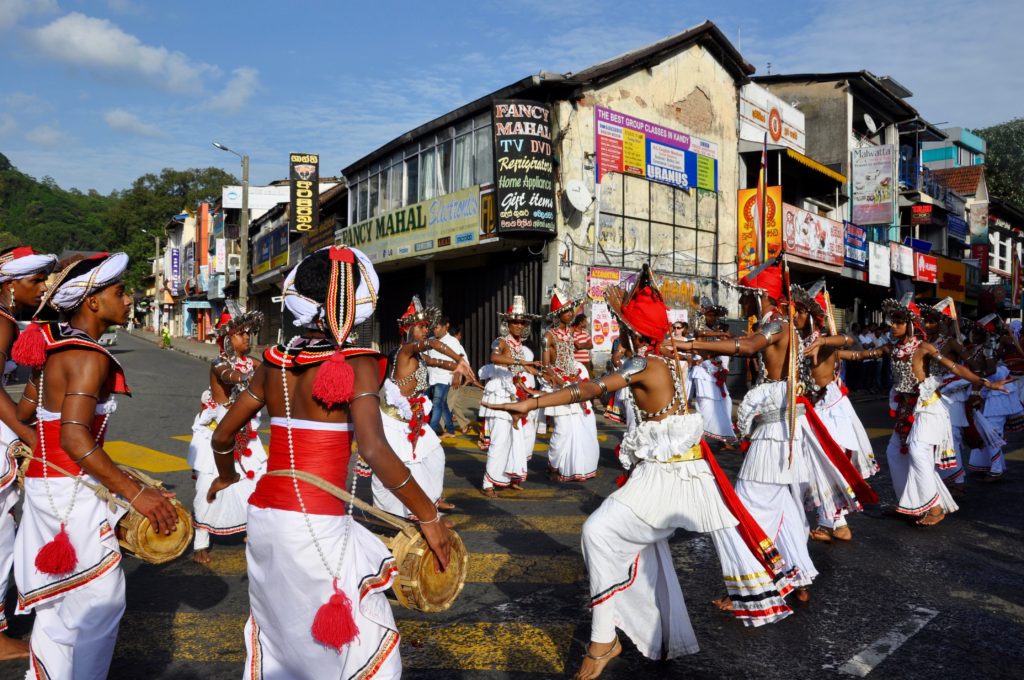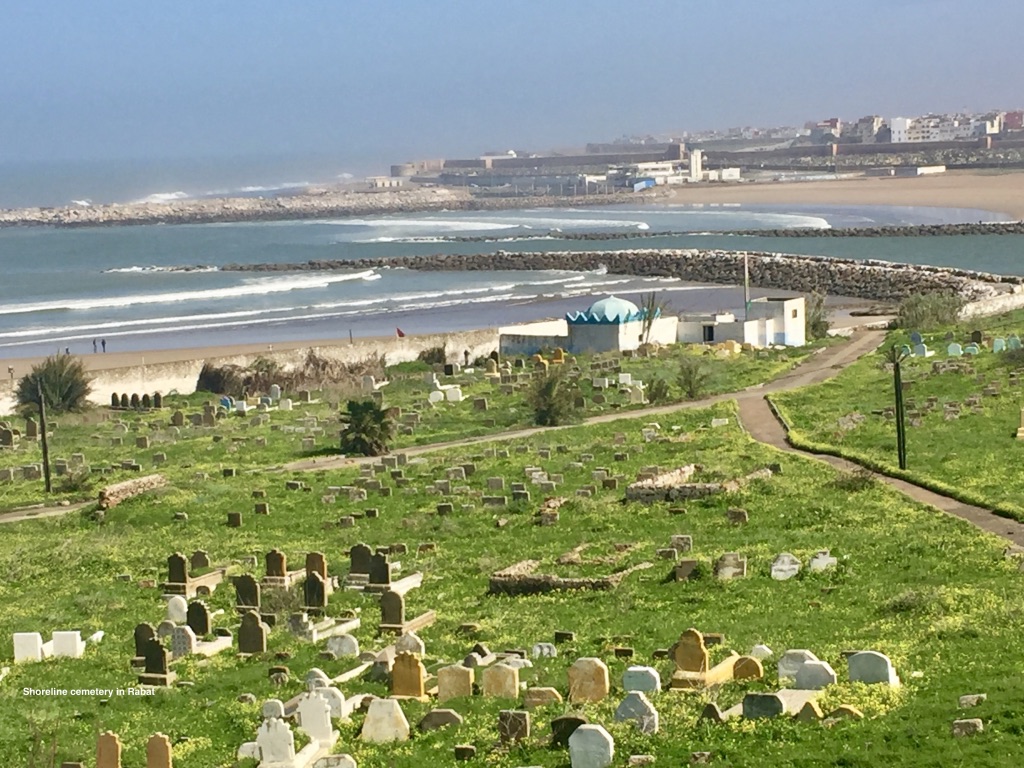 In Frank Capra’s film It’s a Wonderful Life, George Bailey (Jimmy Stewart) asks his soon to be wife, Mary (Donna Reed): “What do you want? You want the moon? Just say the word and I will throw a lasso around it.” The first three months in 2019 would have been a good time for George to try. During these months a perigee full moon or “super moon” arose in the sky. Perigee describes when the moon’s orbit is closest to Earth at the same time when it is full. While the January 21 full moon staged a total lunar eclipse and turned blood red, it was on February 19 at 4:07 a.m. Central Daylight Time when George’s lasso would need to extend only 221,681 miles to reach the moon. Closer than any other day in 2019.
In Frank Capra’s film It’s a Wonderful Life, George Bailey (Jimmy Stewart) asks his soon to be wife, Mary (Donna Reed): “What do you want? You want the moon? Just say the word and I will throw a lasso around it.” The first three months in 2019 would have been a good time for George to try. During these months a perigee full moon or “super moon” arose in the sky. Perigee describes when the moon’s orbit is closest to Earth at the same time when it is full. While the January 21 full moon staged a total lunar eclipse and turned blood red, it was on February 19 at 4:07 a.m. Central Daylight Time when George’s lasso would need to extend only 221,681 miles to reach the moon. Closer than any other day in 2019.
Curious about the super moons, my eyes wandered the night sky. To be honest, I couldn’t tell much of a difference between it and any other full moon. While venturing outside at night the unexpected can happen. January’s super moon change of color was fascinating to see. Watching February’s super moon I heard the hoo, hoo, hoo call of an owl. With a little research I determined it was a long-eared owl. This nocturnal bird uses its voice to establish territory and attract mates in the dark. Isn’t that what George Bailey was doing when he and Mary were young gazing at the moon over Bedford Falls?
For romantics everywhere, big bright super moons might be the perfect time to look to the sky for inspiration. The super moons brighten the evening landscape and pull ocean tides higher than on other nights. Without wind or water on its celestial body, light from the moon’s surfaces reaches Earth in a mere second and a half. Whether you understand what appears in the night sky or not, the moon will always be a familiar face. In many cultures the full moon is an occasion to celebrate.
Moon celebrations
In China, the full moon is a time to reflect on family. During Mid-Autumn festival people eat mooncakes, a Chinese pastry, and search for good places to observe the full moon. Tables are set outside with food, incense and candles facing toward the moon. In India, various festivals coincide with full moon nights called Purnima. Traditionally, during Vat Purnima in May or June married women tie ceremonial threads around banyan trees to express love for their husbands. Hindus celebrate Holi, the festival of colors, on the day after the full moon in March. It’s a celebration of new beginnings and good triumphing over evil. It begins the night before with bonfires. The following day people throw powdered colors onto each other making everyone look like blossoming flowers.
In Sri Lanka, the full moon is celebrated each month with parades. Poya is a civil and bank holiday allowing for a day off of work. The annual light festival Loy Krathong occurs during the full moon in November in Thailand. People float objects traditionally made with the leaves from a banana tree and decorate with flowers and candles. They release their “boats” into the rivers at nightfall, a symbolic way of releasing negative thoughts and past mistakes.

Poya parade in Kandy, Sri Lanka
For Christians and Jews Easter Sunday and Passover celebrations are tied to the full moon in spring. Easter Sunday generally occurs on the first Sunday after the first full moon following the spring equinox. The equinox occurs when the sun is positioned exactly over the equator. The result is a nearly equal amount of daylight and darkness. In 2019, the third full super moon occurred on March 20th. Ecclesiastical rules (mostly Anglican) fix the equinox on March 21. The first full moon after this date occurred on April 19th so Easter Sunday was celebrated on April 21. The spring festival of Passover celebrated by Jews typically begins in March or April on the night of the full moon after the equinox.
In the Southern Hemisphere, the seasons are opposite so a Harvest full moon occurs in March rather than September.
Watch the moon landing again
We can get a fresh look at the 1969 moon landing by watching the recently released documentary film Apollo 11 edited and directed by Todd Douglas Miller. He and his team discovered and seamed together national archival film footage and mission control audio from the Apollo 11 mission to create the film. From the launch of a 6.5-million-pound rocket at Cape Canaveral to the surface of the moon to reconnecting the lander with the command module to splashdown in the North Pacific Ocean, the story is told in the present tense. Of the film, Miller said, “We get into our boxes and events like this unite us and they certainly can again.” I’m not as certain as him, but while watching the film I did remember the feeling of being united. In a final scene as an aircraft carrier heads towards the capsule we see the moon as a pale low hanging circle in an early evening sky, not to be lassoed, not to be conquered, but a mystery to be unraveled as the sky secures our common and universal heritage.
Unsealing Apollo 17 moon rocks
In 1964 before crashing into the cratered, powdery lunar surface the Ranger 7 probe sent the first television pictures. The robotic spacecraft Surveyor 1 delivered more photos in 1966. During the Apollo missions from 1969 to 1972 lunar samples including rocks, sand, and dust were brought back to Earth. Some of the samples from Apollo 17 were frozen and sealed for a time when future technology would offer scientists better details. Nearly fifty years later, that day has come. The stored samples are being unsealed in the summer of 2019. By analyzing tiny cooled droplets within the samples, scientists hope to discover details of the moon’s interior and how it evolved. By doing so they may get a glimpse into how the early solar system formed. Unsealing the samples will also help scientists understand the best way to store samples.
Why unseal the samples now? In part it is a 50-year anniversary celebration of the moon landing. But NASA also has new goals for exploring the moon. By living and working in another world they hope to “open the solar system for human exploration.” Christina Koch is the second NASA astronaut to spend nearly a year in space at the International Space Station.
Such exploration is not for the faint of heart. Most of us are happy to just gaze at the moon, eat pastries or float candles when the moon is full. Would George Bailey leave Bedford Falls to explore the moon? Probably not. However, he did have that brother Harry who went to college and later became a navy pilot earning the medal of honor. I’m left with a conflicting thought. Which is better for future space exploration, a navy pilot with a jet or a dreamer with a lasso? Fortunately for us, astronauts and planetary scientists are a bit of both.




On the 75th anniversary of D-Day NASA acknowledged the contributions made by meteorologists and the role of the moon: “On June 4, 1944, armadas of Allied forces were either amassed in Portsmouth Harbor or steaming toward France. Allied Supreme Commander Dwight Eisenhower had set the early morning of June 5 as the date for the massive amphibious invasion—a date military planners had carefully selected. It was one of just three days in June 1944 when the Moon would be bright enough for paratroopers and pilots to operate effectively and the tides would be low enough for the first landing parties to clear mines, barbed wire, and other defenses on the beaches.”
“At the time, weather forecasting was a young science; there were no satellites, no computer forecasts models, and no weather radar.”